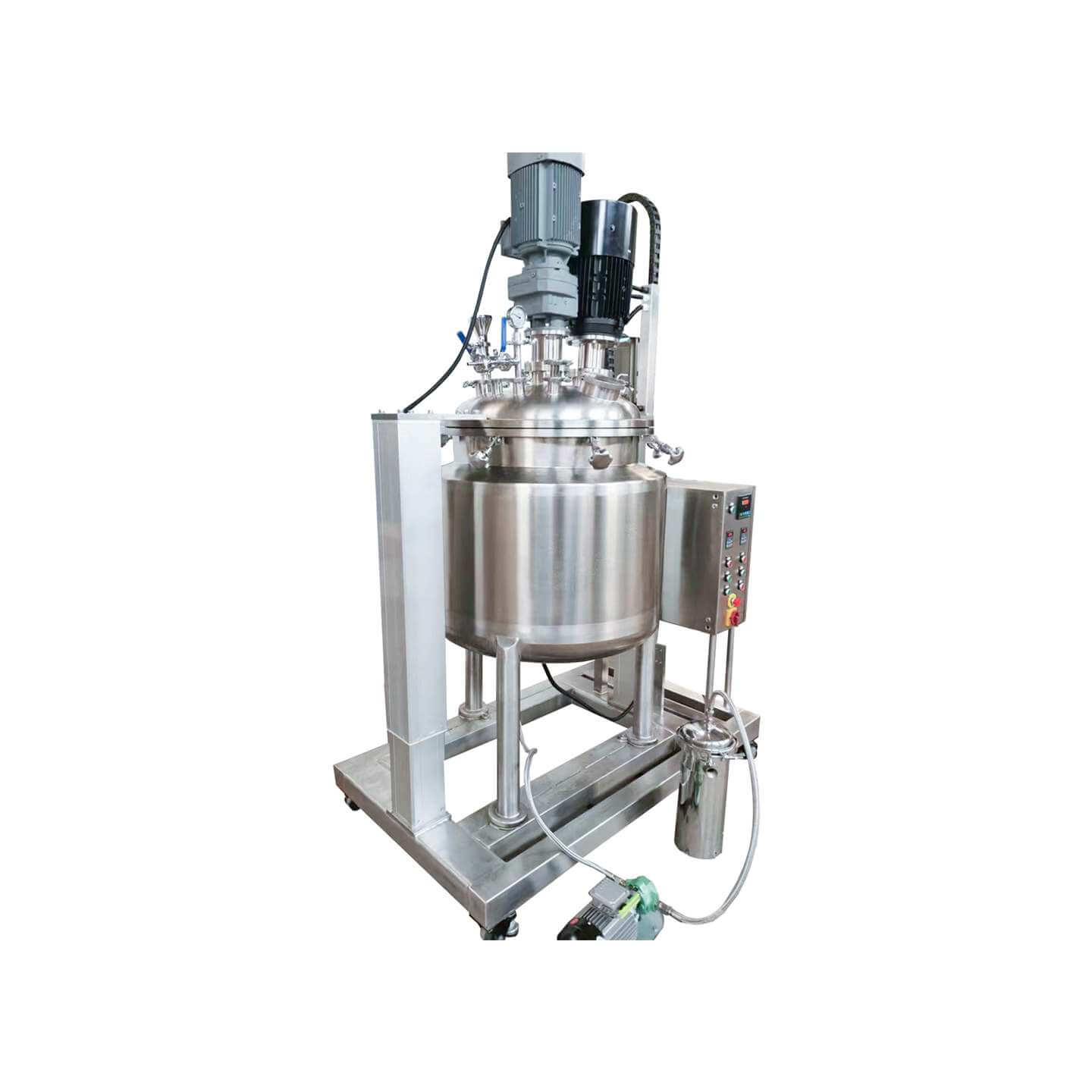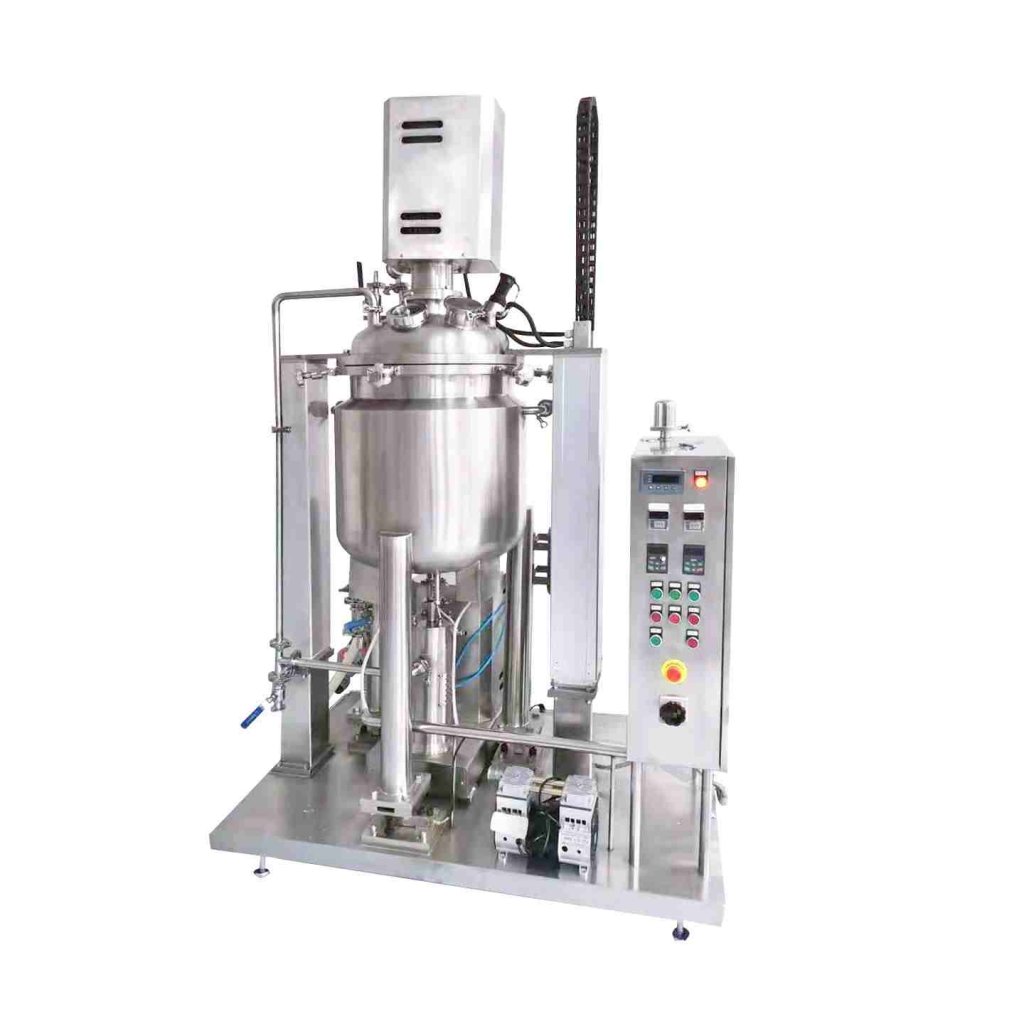

Laboratory Reactor
Laboratory reactor: used in the chemical industry, pesticide, paint, and other fields
Material
glass, stainless steel (316, 304), carbon steel, others
Capacity (L)
10-10000+
Mixing system
anchor, paddle, frame and others
Heating system
electric heating, oil heating and others
The laboratory reactor is small in size, beautiful in appearance, light, and fast in installation. It is composed of a pot body, pot cover, stirrer, jacket, support and transmission device, shaft sealing device, etc. The type of stirring device, rotation speed, sealing structure, heating method, etc. are produced.
Request a quoteA laboratory reactor is a kind of reaction equipment that can carry out various catalytic reactions, high-temperature and high-pressure synthesis, hydrogenation reactions, gas-liquid two-phase, etc. It has the characteristics of easy operation, good mixing effect, and accurate temperature control. The laboratory reactor kettle is made of high-quality stainless steel, with an upper and lower head structure, and can be evacuated. The inner pot and jacket of the laboratory reactor kettle are equipped with a digital temperature control system, which can freely set the upper and lower limits of the required temperature and monitor temperature changes at any time.

Laboratory reactor protective measures
During the production process of laboratory reactors, if you encounter highly toxic gas substances such as hydrogen cyanide, hydrogen sulfide, benzene, etc., you should pay attention to the following protective measures during the operation:
1.When arranging the production or experimental environment, normative documents or technical means for regularly monitoring the air in the production and experimental environment must be specially marked or provided.
2.Daily monitoring and testing of the tightness of laboratory reactors containing toxic gases should be strengthened. When performing maintenance, personnel must wear protective equipment and set up on-site personal flushing facilities and eyewash stations.
3.In the event of an acute poisoning accident among workers during the operation of the laboratory reactor, it should be ensured that timely and effective rescue and treatment measures can be taken. Especially when the air pressure is low, monitoring and protection should be strengthened.
4.For workplaces where toxic gas leakage may occur, the ground should be paved with impermeable building materials and cofferdams should be set up.
5.The tightness of laboratory reactors, valves (sampling valves, pour valves, etc.), pipe flange connections, and airflow seals should be improved. At the same time, special attention should be paid to the use of new fillers and gaskets that are resistant to high temperatures, corrosion, and wear to prevent the spread and leakage of harmful substances.
6.A closed circulation system should be used for materials sampled from laboratory reactors. For a liquid level indication of materials, glass tube liquid level gauges shall not be used. The sampling point should be located in a place where sampling is easy and can be quickly evacuated. The sampling valve should adopt double insurance settings to ensure safety.
7.If the exhaust gas can be burned by a torch, a torch should be installed in the laboratory reactor. The torch should be equipped with a permanent light and a television monitoring system.
8.Wastewater and waste containing toxic gases need to be burned in an incinerator. The incinerator should use permanent burners and be equipped with a television monitoring system.
9.Evaporators of corresponding flammable and explosive poisonous gases shall not be arranged in the laboratory reactor torch area or incinerator area.

Laboratory reactor cleaning methods
1.Chemical cleaning
First of all, we need to know the composition of the dirt in the laboratory reactor, and it is best to take samples for analysis. After determining the composition of the dirt, do a test first. When selecting a cleaning agent, make sure through tests that it will not cause corrosion to the metal of the laboratory reactor. Then, a temporary circulation device is set up on-site to circulate the cleaning fluid in the laboratory reactor to wash away the dirt.
2.Mechanical cleaning
Use a high pressure cleaning device to flush 150-200MPa high-pressure water through the nozzle to wash away the dirt in the laboratory reactor.
Both methods have their own pros and cons. Chemical cleaning requires less labor and takes a short cleaning time, but it may cause corrosion of the laboratory reactor. Mechanical cleaning will not cause corrosion to the laboratory reactor and can effectively clean hard scale, but it takes a long time and is labor-intensive. Therefore, chemical cleaning should be used in working conditions where the dirt is soft and thin, and mechanical cleaning should be used in working conditions where the dirt is hard and thick.
The laboratory reactor kettle consists of a kettle body, a kettle lid, a stirrer, a jacket, a support and transmission device, a shaft seal device, etc. (a structure with insulation can be used according to process needs). According to the material production requirements and user needs, the pressure, temperature, material, mixing device type, rotation speed, sealing structure, heating method, etc. are determined for design and manufacturing. Laboratory reactors can also be used for sample preprocessing in some photochemical analyses. It is widely used in research and production in petrochemical, biomedicine, material science, environmental science, commodity inspection, and other departments.




